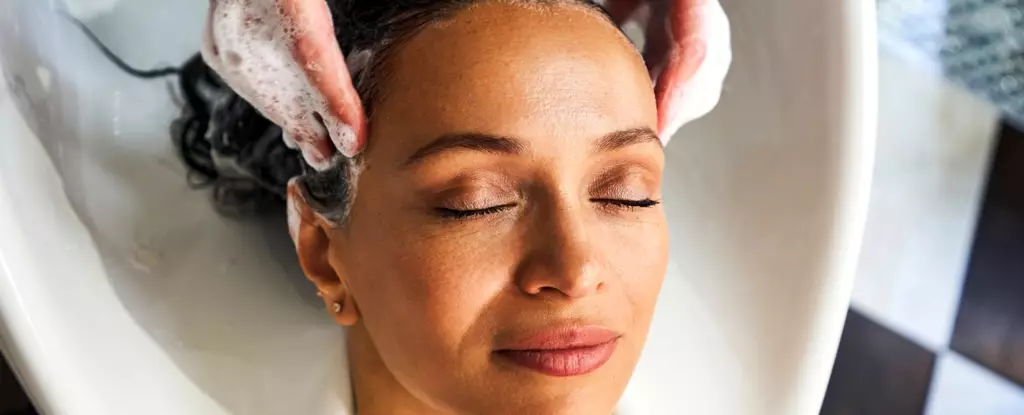Going to the salon for a haircut or wash is often viewed as a comforting retreat from daily stresses. However, lurking beneath this seemingly harmless activity is a rare yet serious health concern known as Beauty Parlor Stroke Syndrome (BPSS). While most patrons leave the salon feeling rejuvenated, a small percentage face potential threats during what should be a simple shampooing.
The phenomenon of BPSS came to light in 1993 through the work of neurologist Michael Weintraub. Observing a perplexing pattern among his patients, Weintraub discovered that several individuals exhibited stroke-like symptoms following hair washing. This compelling connection ignited further inquiry into the conditions that could transform a routine salon experience into a life-threatening event.
BPSS is delineated as a type of stroke precipitated by ergonomic mishaps at the salon’s backwash stations, which serve the purpose of washing hair. When seated at these stations, clients typically recline their heads backward to facilitate an effective shampoo. In doing so, they may unwittingly adopt a position that accentuates the neck’s stress and compromises vascular health.
The Mechanisms Behind Stroke Risks
Strokes occur when the brain is deprived of blood flow—either through a blockage such as a clot or by the rupture of a major artery. These events can lead to devastating consequences due to the brain’s dependence on a consistent supply of oxygen and nutrients; without them, brain cells begin to die.
Research indicates that the awkward head position the clientele assumes can be highly problematic. When the neck is overextended or rotated, this can compress or even tear vital arteries that deliver blood to the brain’s posterior regions. The risks are further compounded for certain individuals with preexisting conditions, such as spinal arthritis or narrowing of the blood vessels, which may increase their susceptibility to BPSS.
Additionally, unexpected jerking motions from vigorous scrubbing at the hands of hair professionals can also trigger underlying vulnerabilities. It’s fascinating to note that while the general perception might link strokes predominantly to older individuals or those with prominent health concerns, young and healthy individuals are not immune.
To explore BPSS further, a 2016 Swiss study revealed a mere ten documented cases from 2002 to 2013, suggesting that while this syndrome remains rare compared to traditional strokes, awareness is crucial. Individuals must be attuned to the warning signs which may manifest within minutes or potentially develop later—this delayed symptom onset complicates diagnosis.
Common indicators include sudden headaches, dizziness, blurred vision, neck pain, and feelings of lightheadedness. In extreme manifestations, some victims may experience temporary paralysis on one side of the body or near loss of consciousness. The variances in symptoms and their timing can be confounding, leading healthcare providers to potentially misclassify BPSS as a standard stroke, further complicating appropriate treatment.
Understanding BPSS leads to empowering actions. Clients concerned about their experience at hair salons should advocate for their own comfort and safety. Opting for alternative positions while shampooing—such as leaning forward instead of reclining back—can greatly reduce risks. If reclining is unavoidable, requesting sufficient neck support can also be beneficial.
Moreover, individuals are encouraged to communicate any discomfort to their hairstylists immediately. A gentle touch during washing and limitation of time spent in strained positions are prudent strategies to diminish risks.
While concerns regarding BPSS exist, it’s crucial to frame this within the larger context of mental health and self-empowerment that hair salons often promote. The psychological benefits of visiting a hairdresser—enhanced self-esteem, relaxation, and social interaction—are significant.
Thus, rather than allowing the fear of BPSS to dissuade salon visits, individuals should remain informed and proactive. By maintaining a balance between caution and enjoyment, clients can still indulge in the rejuvenation that a hair appointment offers. Ultimately, knowledge is key; understanding BPSS emphasizes the importance of client safety without overshadowing the essential self-care experiences that salons provide.

